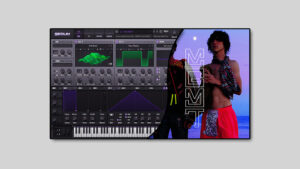I remade the bass from Blah Blah Blah by Armin Van Buuren. I made some small adjustments to the sound after filming this video. You can download the latest version of this preset right here!
What is “psytrance”?
Psytrance originated in Goa, India, where trance parties were held on the beaches and featured a mix of electronic music and psychedelic culture. The music typically had a fast tempo and a futuristic, otherworldly sound, and it was often characterized by complex, layered melodies and intricate rhythms. Over time, psytrance spread from its origins in Goa to other parts of the world, and it became a popular genre in its own right, with a dedicated following and a thriving underground scene. Today, psytrance continues to evolve and change, with new styles and subgenres emerging all the time. Despite its underground roots, it has also gained mainstream acceptance and can be heard at music festivals and clubs around the world.
Psytrance, also known as psychedelic trance, is a subgenre of trance music that originated in the 1990s. It is known for its fast, upbeat tempo and intense, futuristic sound. The bass in psytrance music is particularly important because it provides the driving force behind the music and helps to create a sense of energy and excitement. The bassline is often the most prominent element of the music, and it typically consists of a repetitive, high-energy pattern that drives the beat and keeps the music moving forward. In addition to providing a rhythmic foundation for the music, the bass in psytrance also helps to create a sense of excitement and euphoria, which is a key part of the psychedelic experience. The bassline is often the element of the music that connects with listeners on a visceral level and helps to create a sense of unity and connection among those who are listening to the music.





